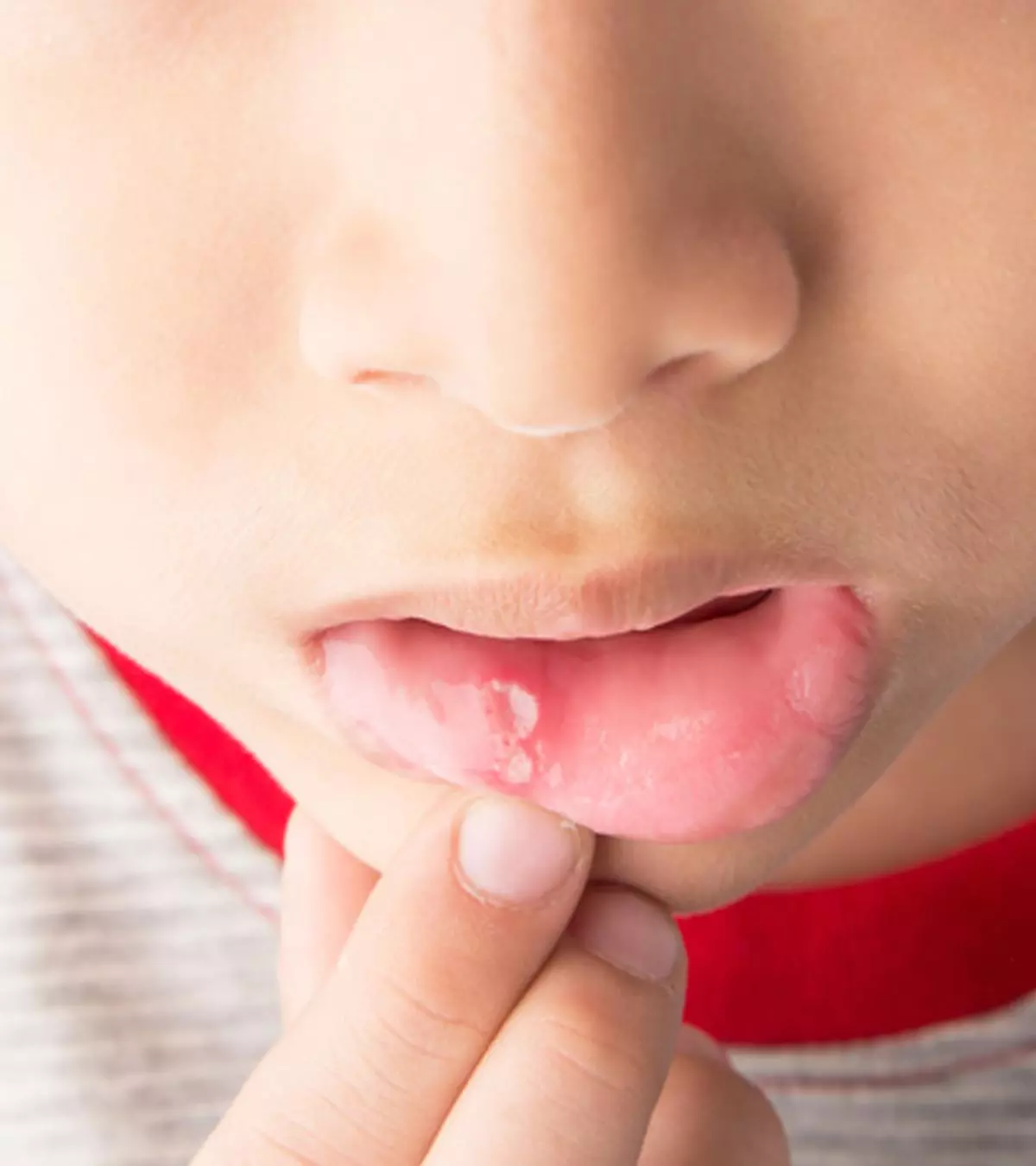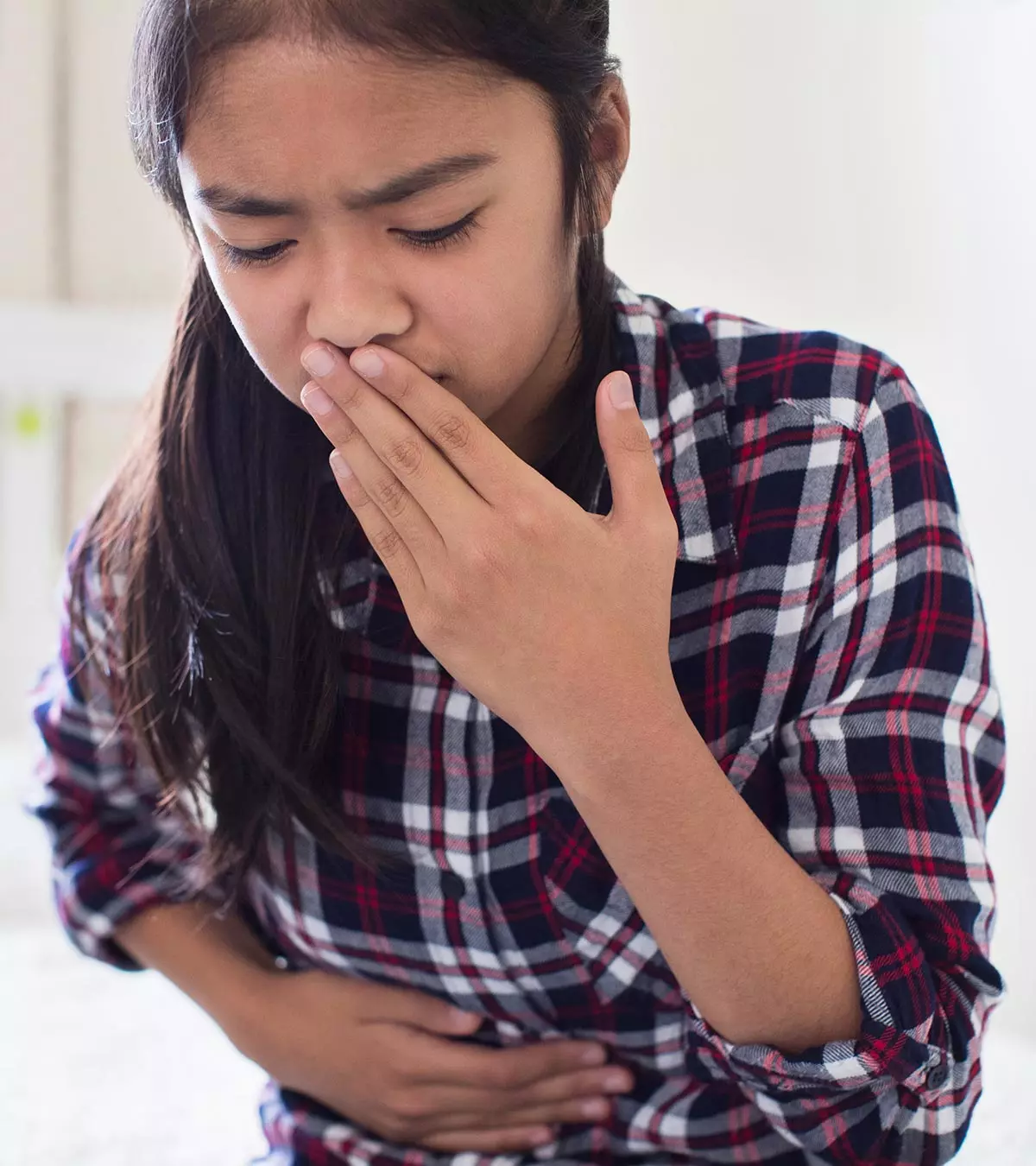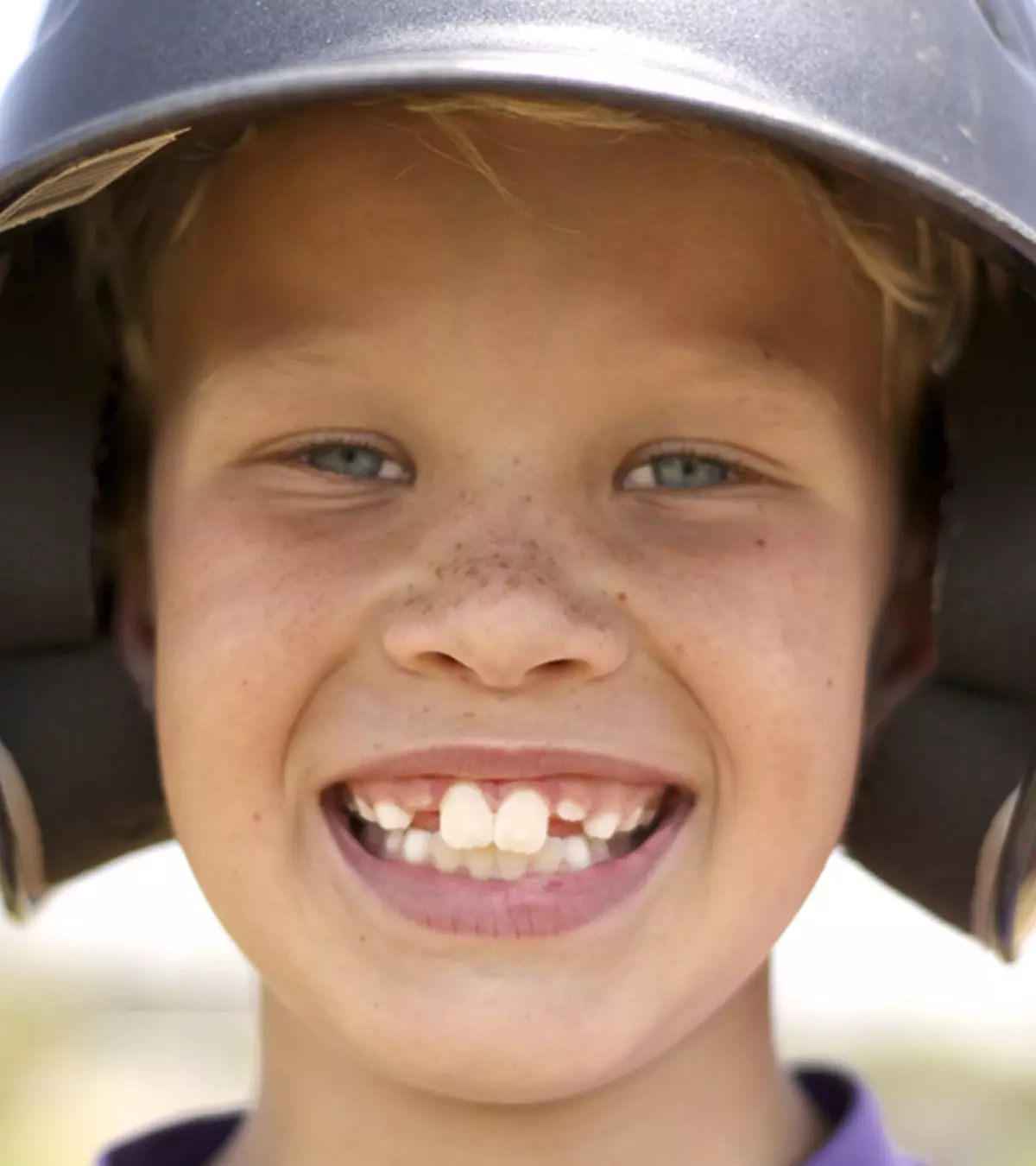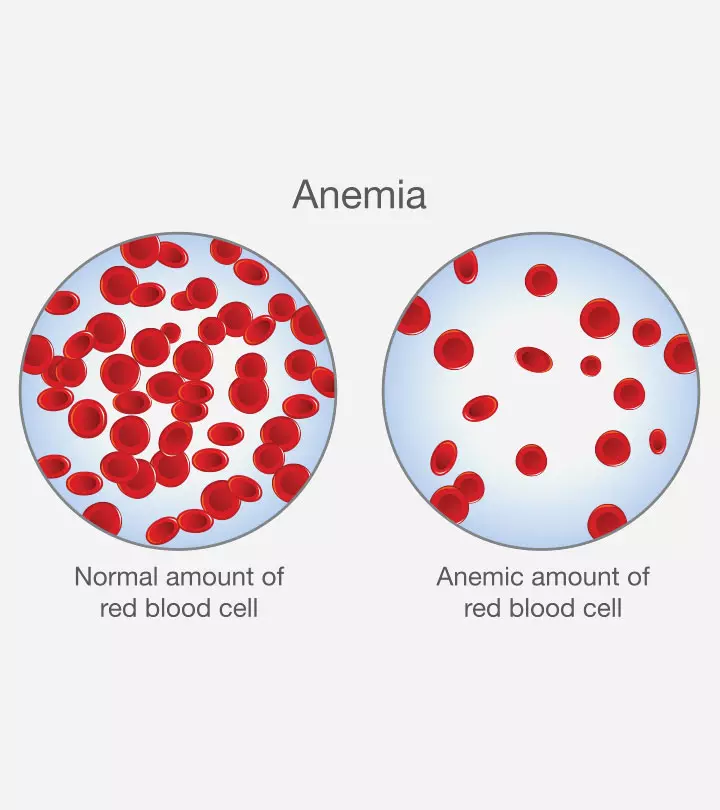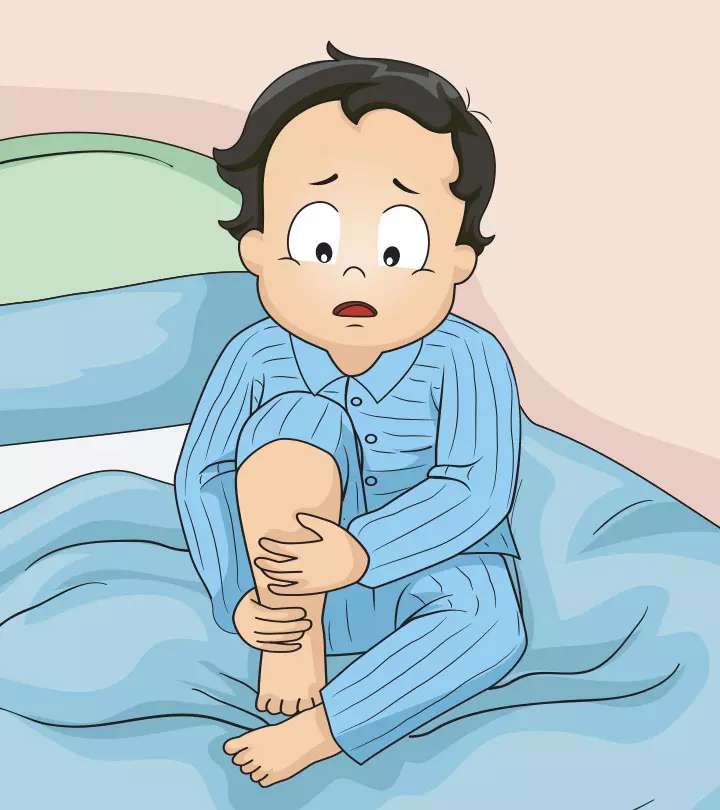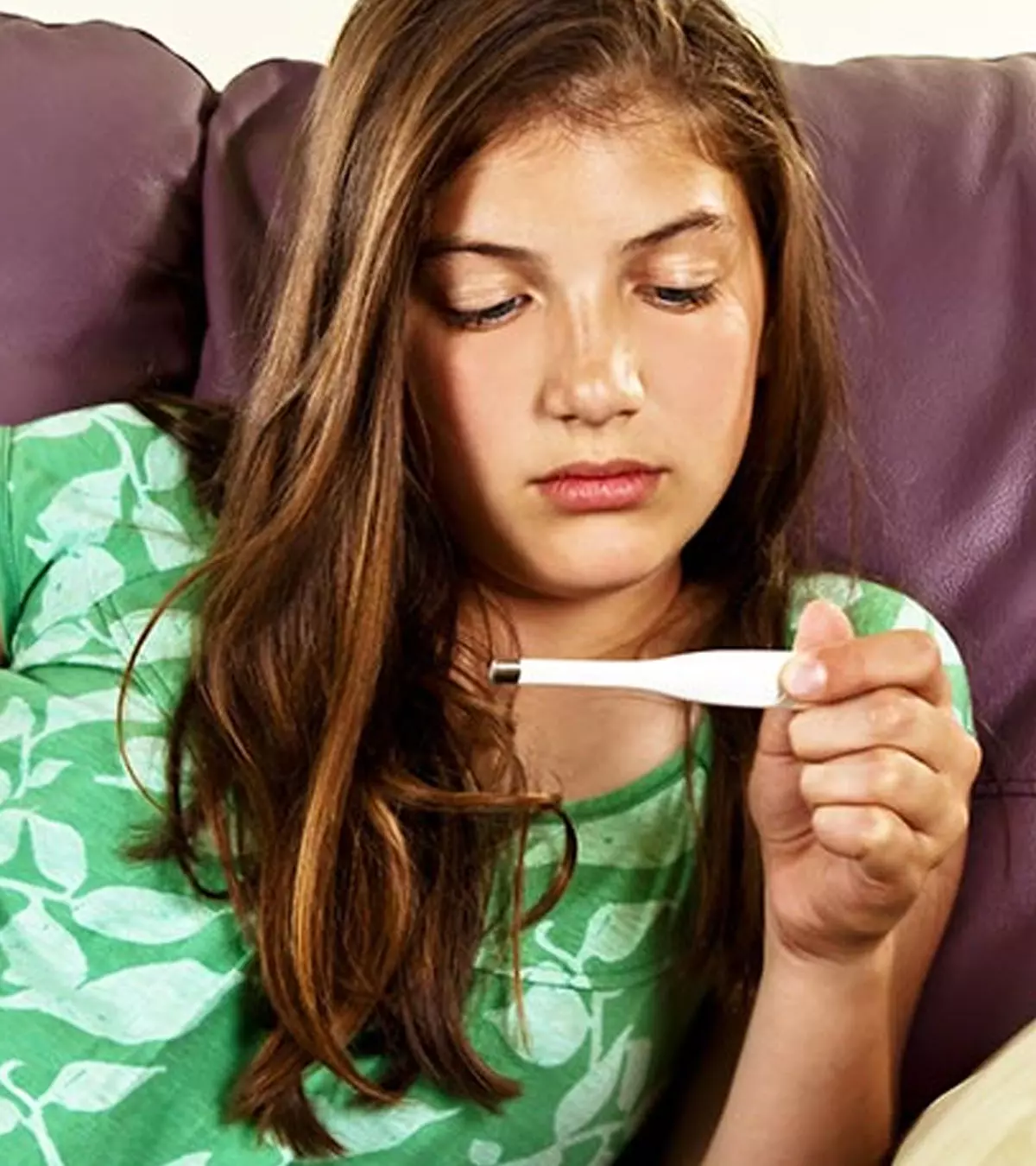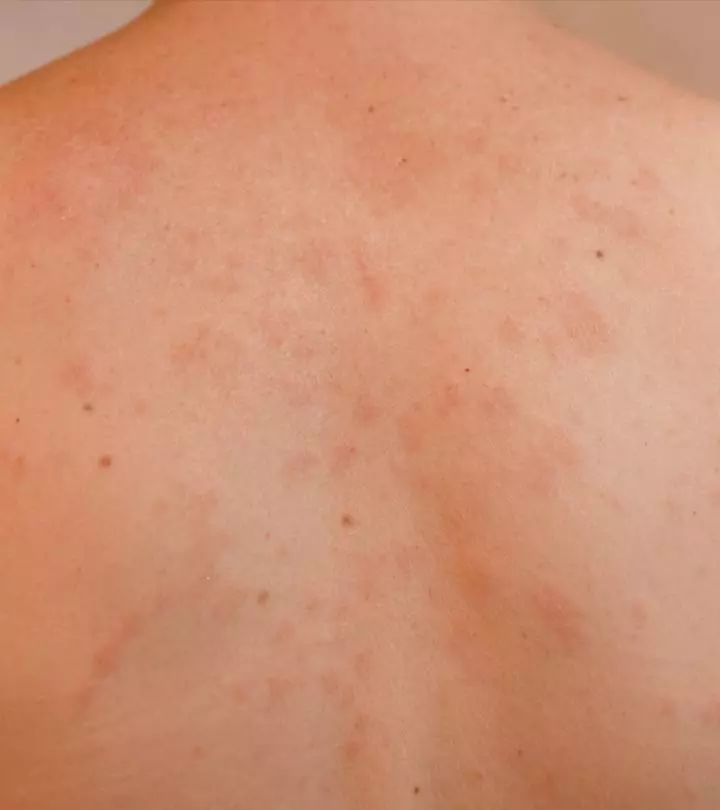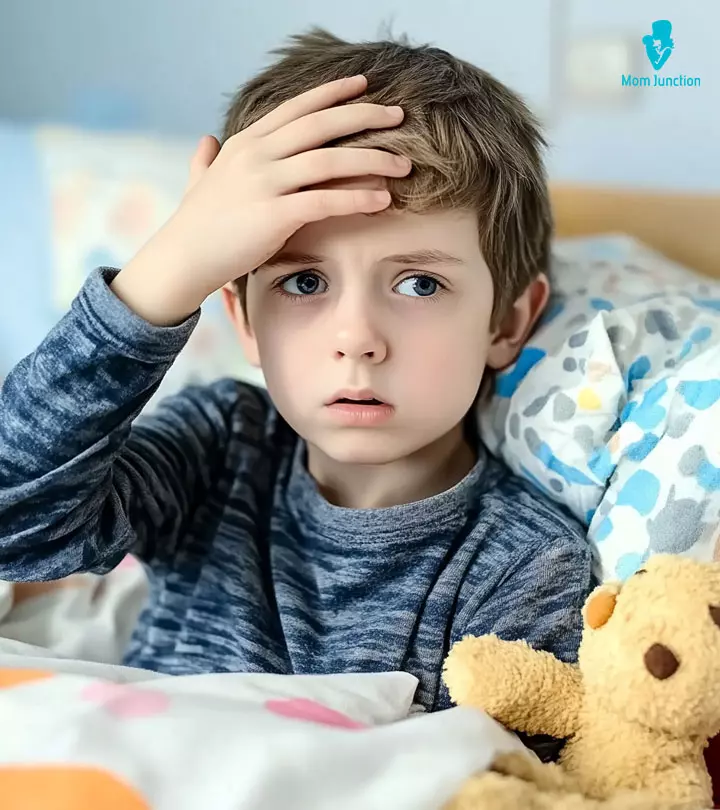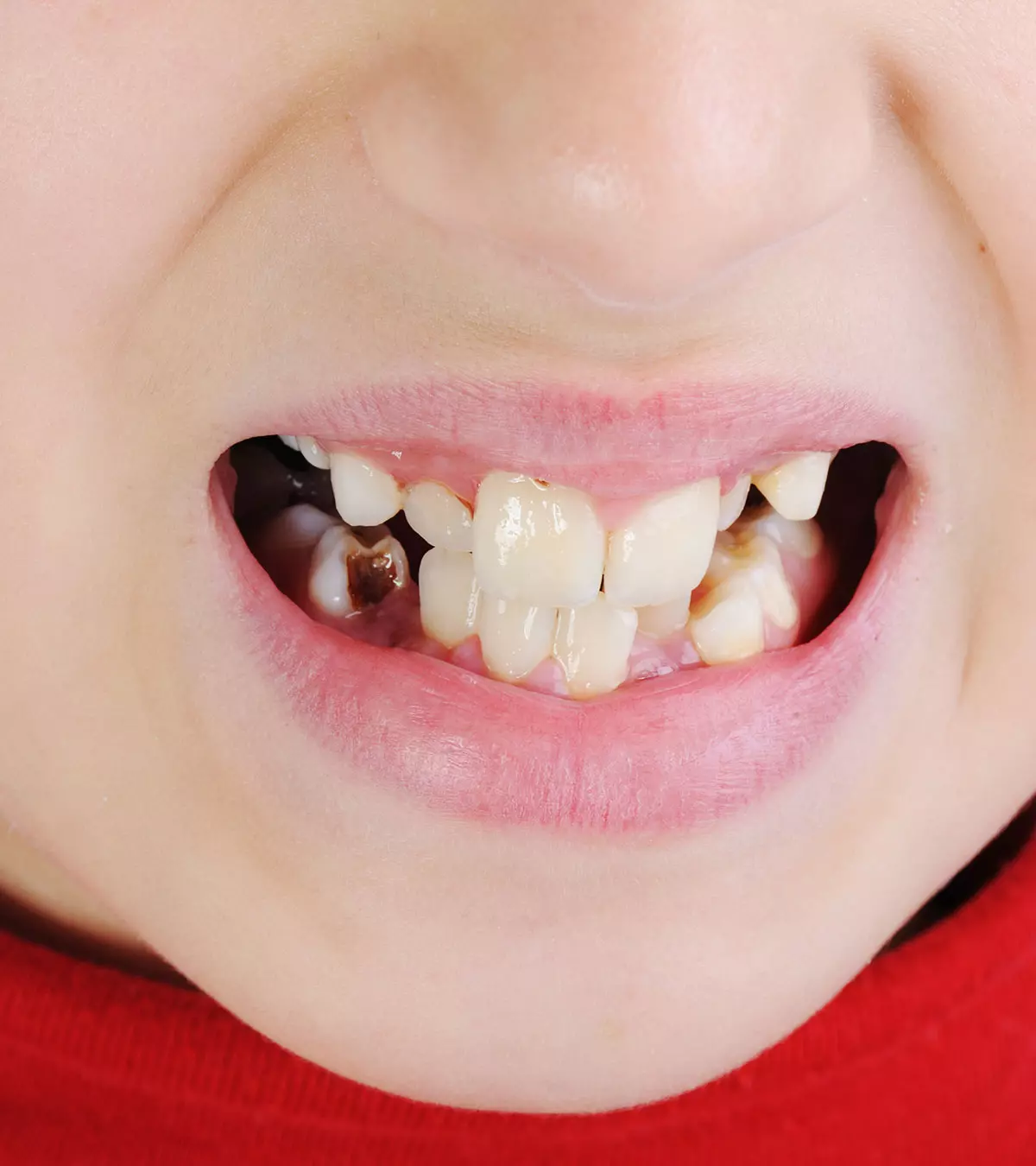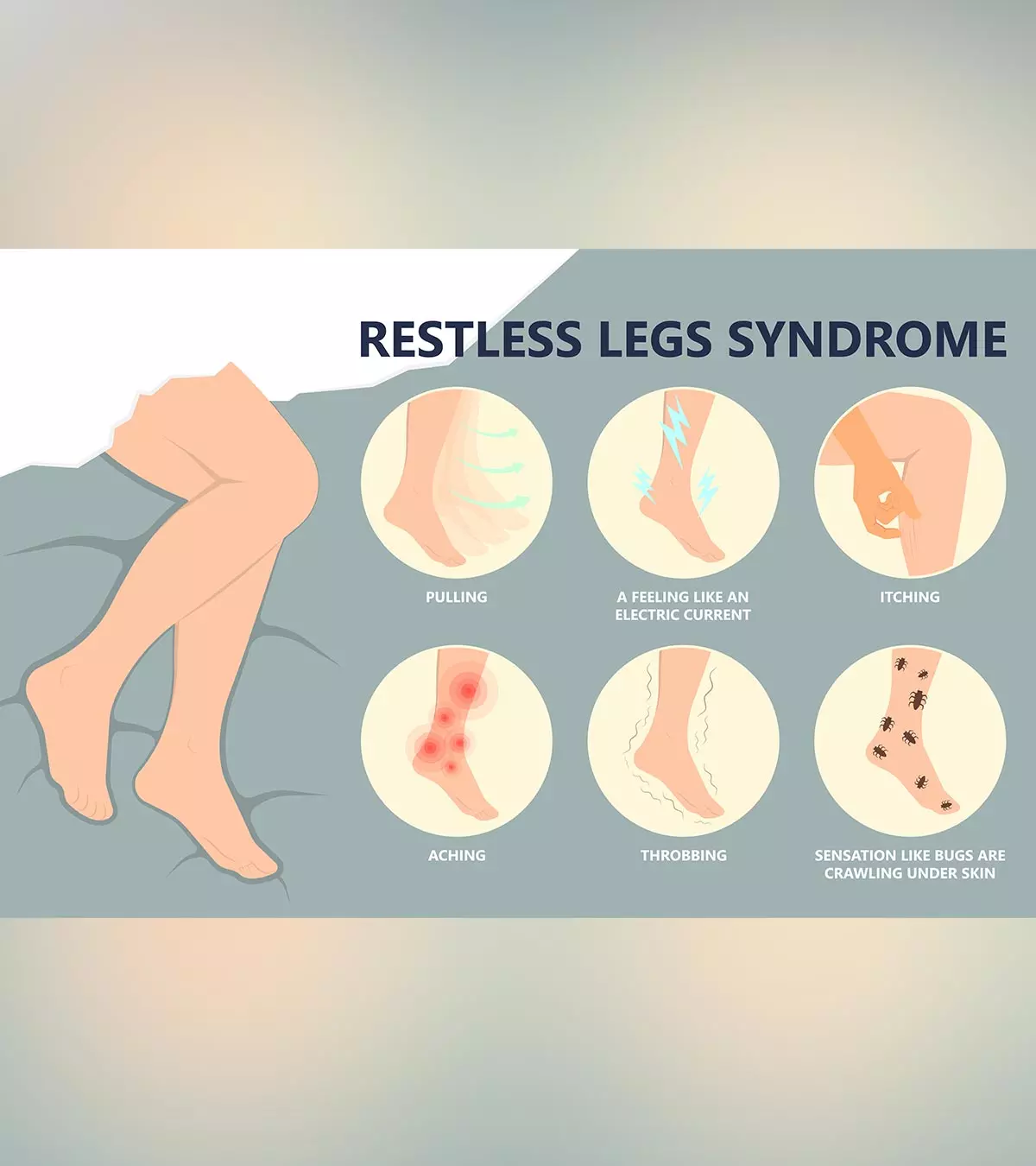
Image: Shutterstock
Restless leg syndrome in kids is a sensory and motor disorder, leading to uncontrollable sensations accompanied by an urge to move the legs. Most children feel this urge to move their legs when they are inactive or resting, such as during bedtime, while sitting for long hours in the classroom, or during car rides (1).
According to the National Library of Medicine, two to four percent of US children are diagnosed with restless leg syndrome.
The diagnosis of restless leg syndrome or RLS can be challenging in children since it is clinically diagnosed based on the medical history and symptoms. In addition, behavioral problems, such as inattention, hyperactivity, aggression, and daytime somnolence, are seen in some children with RLS (1).
Read on to know the causes, symptoms, and treatments for restless leg syndrome in children.
Key Pointers
- About 1.5 million children and adolescents are affected by restless leg syndrome.
- Children with low dopamine levels and iron deficiency are more likely to develop restless legs syndrome.
- While there is no FDA-approved drug for RLS, some homecare treatments may help reduce the intensity of the syndrome.
How Common Is Restless Leg Syndrome In Children?
RLS affects both children and adults. According to the Restless Legs Syndrome Foundation, this neurological condition is estimated to affect 1.5 million children and adolescents. Also, about 35% of patients report RLS during childhood or adolescence, and one in ten children report symptoms onset during the first decade of their lives (2).
Symptoms Of Restless Leg Syndrome In Children

Image: IStock
It is not easy to identify RLS in children, as most of the symptoms are often brushed off as growing pains or typical child behavior.
Here are a few symptoms that also serve as diagnostic criteria for determining RLS in children (1).
- An uncomfortable and unpleasant aching, tingling, twitching, crawling, or burning sensation in the legs causing an uncontrollable urge to move the legs
- The urge begins or gets worse during periods of rest or inactivity, such as when lying down or sitting
- Restlessness starts or gets worse only in the evening or night
- The unpleasant feeling is temporarily relieved by moving, walking, or stretching the legs
- Inability to sleep or stay put to sleep throughout the night
- Unsatisfactory performance at school
- Poor social development and abnormal social interactions
- Habitual use of phrases such as ‘ouchies,’ ‘oowies,’ ‘tickle,’ ‘creepy crawlies,’ ‘want to run,’ ‘a lot of energy in my legs,’ ‘pain,’ and ‘ache.’
Sometimes, these symptoms may also be due to an associated syndrome known as periodic limb movement disorder (PLMD). This disorder is characterized by brief involuntary jerks of the foot or leg for every 20 to 40 seconds. RLS often occurs together with PLMD and is frequently seen in children with attention deficit hyperactivity disorder (ADHD) (1).
What Causes Restless Leg Syndrome In Children?
RLS is known to run in families. Children with RLS are found to have low levels of dopamine, a hormone that controls motion (3). Also, studies have found that children who have iron deficiency are at a higher risk of developing it (1).
 Point to consider
Point to considerDiagnosis Of Restless Leg Syndrome

Image: IStock
To diagnose RLS in children, they need to have the first four of the symptoms mentioned above. If the child is unable to describe the signs on their own, the doctor might ask you for additional information, such as sleep disturbances or a family history of RLS.
Blood tests to determine the iron (serum ferritin) levels may also be recommended as ferritin levels less than 50 mcg/L might indicate an underlying medical problem (3).
If the doctor suspects PLMD, they might order a polysomnogram (PSG). A periodic limb movement index of five or more per hour of sleep could indicate PLMD (1).
Risks And Complications Of RLS
Children with a family history of RLS and children deficient in iron are at a greater risk for developing RLS. Also, if your child has a history of bleeding disorders or experiences heavy menstrual periods, they may have anemia, which increases the risk.
Although RLS has no life-threatening complications, it may disturb the overall well-being of the child. As children with RLS have difficulty falling asleep, they might experience insomnia, leading to daytime excessive drowsiness and depression.
Treatment For Restless Leg Syndrome

Image: IStock
According to the American Academy of Sleep Medicine, there are no specific medications recommended to treat RLS and PLMD in children. Also, the US Food and Drug Administration has approved no medications for RLS in children.
Although dopamine agonists, benzodiazepines, and alpha-adrenergics have been tried on children with RLS, their long-term effects are unknown. These medications should be used with caution among children as some may relax the upper airway muscles and cause upper airway collapse. Also, the long-term effects of iron therapy are not known while treating RLS.
Your doctor is the best person to evaluate your child’s condition and prescribe the best possible treatment (1). This condition may not fully go away in your child. However, with proper guidance and some home care treatments, you may be able to reduce the intensity of the syndrome and help your child lead a normal life.
 Point to consider
Point to considerExercises For Restless Leg Syndrome In Children
Keep the following things in mind when exercising to manage RLS in children:
- Ensure daily aerobic exercise and lower-body resistance training, even for just 30 minutes, as it can effectively ease the symptoms.
- Opt for enjoyable activities that focus on leg movement, as moderate exercise significantly reduces RLS symptoms without requiring intense workouts.
- Avoid strenuous exercise, especially close to bedtime, as it might worsen RLS symptoms.
- Highly vigorous exercise and overexertion leading to joint or muscle pain can backfire as it may exacerbate RLS symptoms.
Balancing regular, moderate physical activity based on personal preferences is key in managing and lessening the impact of restless legs syndrome. Discovering the right exercise routine can profoundly improve daily comfort and overall well-being (4).
Home Care Treatments For Restless Leg Syndrome In Children
Along with your doctor’s treatment plan, you may follow some home care treatments to help relieve the symptoms of RLS.
- Give your child a warm or a cold compress. It might help reduce the unpleasant sensation in the legs.

Image: Shutterstock
- Walking, stretching, and fidgeting temporarily alleviate the involuntary movements and associated discomfort.
- Discourage non-sleep-inducing activities such as watching television or playing games near bedtime.
- Encourage your children to take a warm and relaxing bath before bed.
- Talk to your child’s pediatrician to know if you can give your child supplements such as vitamins or minerals.

Image: IStock
- Make sure your child is eating a well-balanced and healthy diet.
 Quick tip
Quick tipFrequently Asked Questions
1. What vitamins help restless leg syndrome in kids?
A recent study reported that vitamin D deficiency might be a risk factor for restless leg syndrome (RLS) and sleep disorders in children (5).
2. When should I worry about restless leg syndrome?
Restless leg syndrome in children might cause sleep problems and adversely impact their moods and overall quality of life. Therefore, if your child experiences signs of the disorder accompanied by other discomforts, you should get them under pediatric care for prompt treatment (6).
3. Can stress or anxiety trigger restless leg syndrome in children?
Stress and anxiety may not be directly related to restless leg syndrome. But medication and antidepressant drugs used to treat these health issues, related psychological disorders, and depression may lead to the onset of or worsen Restless Leg Syndrome (7).
4. Is restless leg syndrome more common in boys or girls?
Restless legs syndrome can affect both genders and people of any age, but more cases have been recorded in females than males (7).
Restless Leg Syndrome in kids is a sensorimotor disorder that may affect sleep, attention, and other day-to-day activities. Children with ADHD are at an increased risk of being affected by RLS. Look out for the signs of discomfort and the uncontrollable urge for leg movement in your child and get them diagnosed early. If unrecognized, RLS may cause behavioral disorders in children and teenagers. Warm and cold compresses, a warm bath before bed, a healthy sleep routine, and a balanced diet may help reduce RLS manifestations.
Infographic: Causes Of Restless Legs Syndrome
When the exact cause of restless legs syndrome is unknown, it is called idiopathic restless legs syndrome. However, in many cases, research suggests that it may occur due to an underlying condition. This infographic discusses some conditions that may lead to restless legs syndrome. Illustration: Momjunction Design Team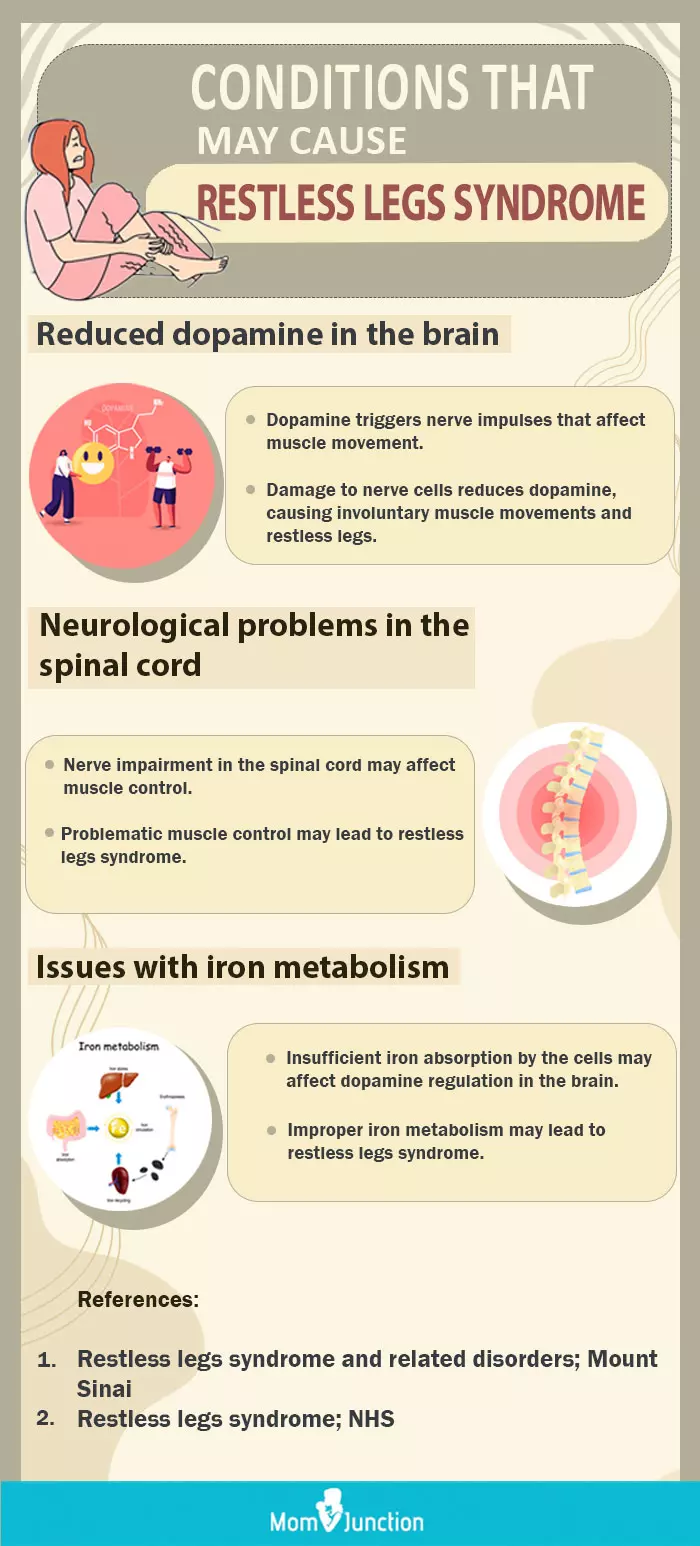
Illustration: Restless Leg Syndrome In Children: Causes Treatment Home Care

Image: Dall·E/MomJunction Design Team
Restless Leg Syndrome is a condition that causes an uncontrollable urge to move your legs. This video provides helpful insight into the condition.
References
1. Murali Maheswaran and Clete A. Kushida; Restless Legs Syndrome in Children; Medscape General Medicine (2006).
2. RLS & Kids; Restless Legs Syndrome Foundation
3. Restless Leg Syndrome (RLS) and Periodic Limb Movement Disorder (PLMD); Children’s Hospital Colorado
4. Restless Legs Syndrome (RLS) Symptoms, Treatment, Self Care; HelpGuide.org
5. Federica Prono et al., The Role of Vitamin D in Sleep Disorders of Children and Adolescents: A Systematic Review; International Journal of Molecular Sciences (2022).
6. Restless Leg Syndrome (RLS) and Periodic Limb Movement Disorder (PLMD); Children’s Hospital Colorado
7. Restless Legs Syndrome (RLS) in Children and Adolescents; Cleveland Clinic
Community Experiences
Join the conversation and become a part of our nurturing community! Share your stories, experiences, and insights to connect with fellow parents.
Read full bio of Dr. Tashawna Stokes
Read full bio of Dr Bisny T. Joseph
Read full bio of Dr. Ritika Shah
Read full bio of Vidya Tadapatri










